High-Quality RO Membrane Filters for Clean Water
Menu
Product introduction
RO Membrane Filter Introduction
The ro membrane filter is a sophisticated separation technology that employs its minute pore size to purify water by filtering out impurities.
Originating from space technology research in the United States during the 1960s, the ro membrane filter has been widely adopted across various sectors such as scientific research, medicine, food and beverage production, and seawater desalination. This type of filter features nanometer-scale pores that allow water molecules to pass through while blocking inorganic salts, heavy metal ions, organic compounds, colloids, bacteria, and viruses from the source water. The ro membrane filter is a key technology for water purification, with pores so small, measuring at 0.0001 microns, they can intercept bacteria, viruses, heavy metal ions, and organic molecules among other contaminants. Operated on the principle of pressure-driven filtration, it permits only the passage of water molecules, retaining pollutants to produce highly purified water. Ro membrane filters are extensively used in household water purifiers, public water supply systems, and industrial wastewater treatment applications.
RO Membrane Filter Components
The construction of the ro membrane filter is exceptionally precise, typically comprising end caps, a central tube, O-rings, the reverse osmosis membrane, and a feed/product water separation grid. These components work synergistically to enable water under pressure to permeate the membrane for filtration, resulting in pure water. The reverse osmosis membrane itself generally consists of three layers: non-woven fabric, a polysulfone layer, and a demineralization layer. For certain membrane elements engineered for specific performances, the surface may be coated with a functional modification layer.
RO Membrane Filter Features
1. The separation process of the ro membrane filter requires high pressure, necessitating the use of high-pressure pumps and pipelines. It is energy-efficient and does not involve phase changes, allowing separation and concentration of heat-sensitive substances at room temperature.
2. It effectively removes ions, molecules, organic colloids, and bacteria from water, making it suitable for treating waters with high salinity.
3. It boasts a high desalination rate and water recovery rate, contributing to water conservation.
4. The membrane separation unit is straightforward and amenable to automation.
5. During the separation process, membrane fouling can occur, thus regular cleaning of the membrane is essential.
6. To mitigate membrane contamination, pretreatment of the raw water is necessary to meet certain standards before it enters the ro membrane filter system.
Technical principle of
Reverse osmosis treatment unit, treatment principle is under the control of pressure, so that permate water from the reverse osmosis membrane pass through to retractable water, While the salt can't go through and a small amount of organic substances will be retained in concentrate liquid.
The technical principle of reverse osmosis membrane is mainly based on two basic physical processes: osmosis and reverse osmosis. During osmosis, due to the appearance of gradient concentration, natural water flows from low-concentration solution to high-concentration solution through semi-seepage solution to dilute high-concentration solution. And in the reverse osmosis process, by applying higher pressure than its osmosis pressure on one side of high concentration solution, reversible flow water molecules, flow from high-concentration solution to low-concentration solution, To achieve the purity.
RO membrane filtration function is very strong. When water flows through the membrane, most of the inorganic salt, the organic material is soluble in the water and bacteria, virus and other creatures can't pass through this membrane and are retained efficiently. And, because the diameter of the water molecules is smaller than the RO membrane aperture, they can pass smoothly, thereby reaching the purpose of separation and purity. This process is not related to chemical changes, no auxiliary product generating and is thus considered a safe and efficient water treatment.
The RO film's features also include electrolysis spraying ability to exceptionally reduce water hardness, and the elimination rate is usually more than 90%, very important for hard water areas. In addition, the membrane life is relatively long, can be used for years under precision maintenance, higher sex price.
In the application, the RO membrane is not only widely used for household and commercial water purification, but also used in many areas such as salt purification, recycling waste water and reuse. Its appearance greatly improved access to clean water, human safety and play an important role in improving global water shortage and ensuring safe water quality. With the development of material science and film technology, the reverse osmosis membrane performance is improved and its unique value will be displayed in many more areas in future.
The production process of
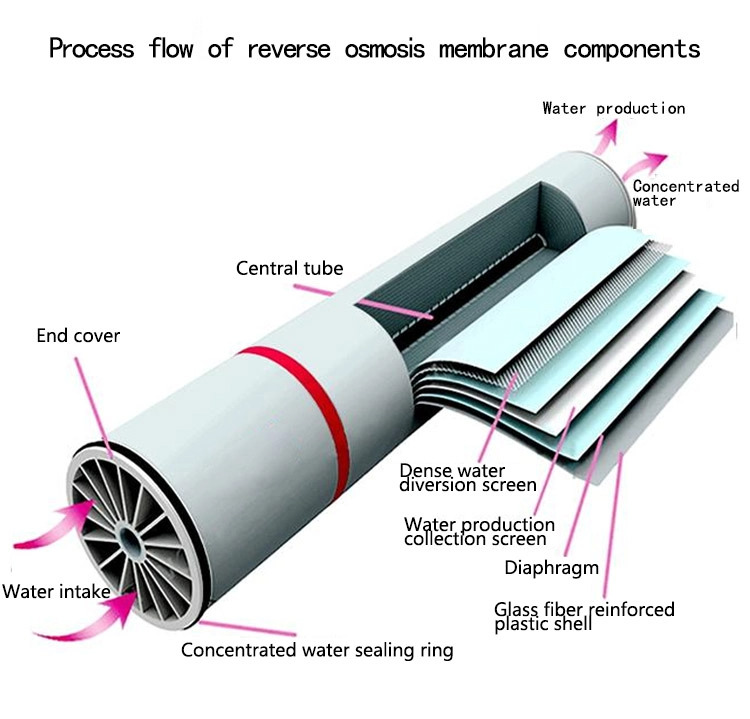
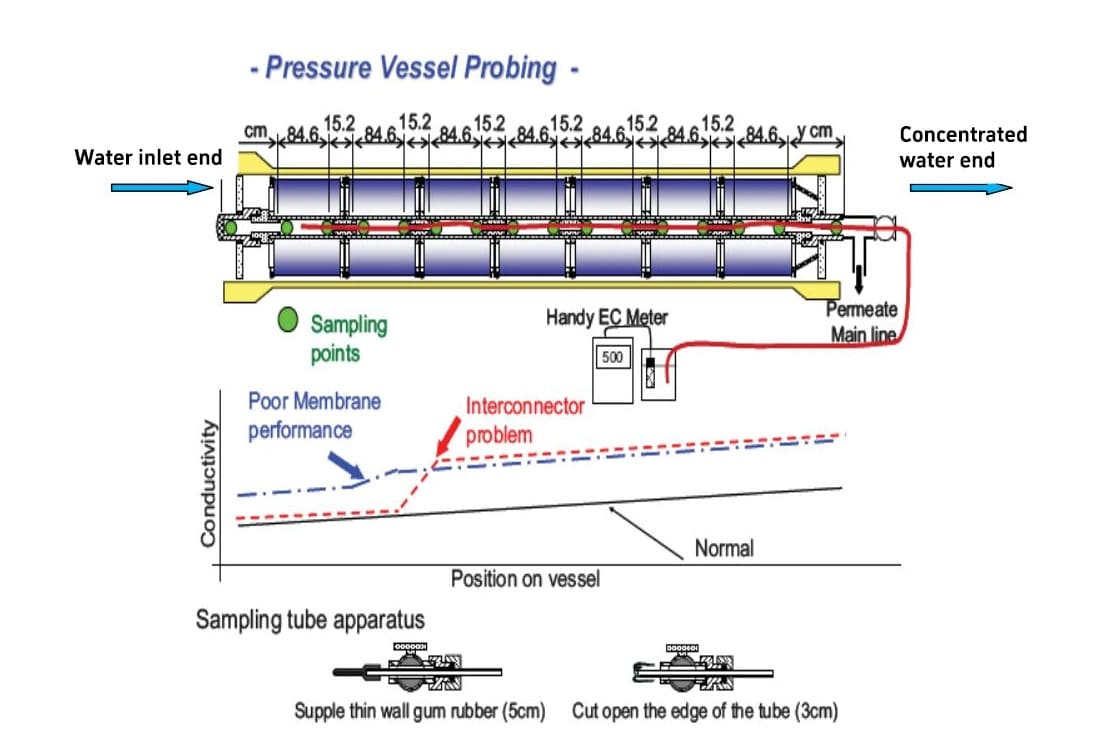
Production of equipment
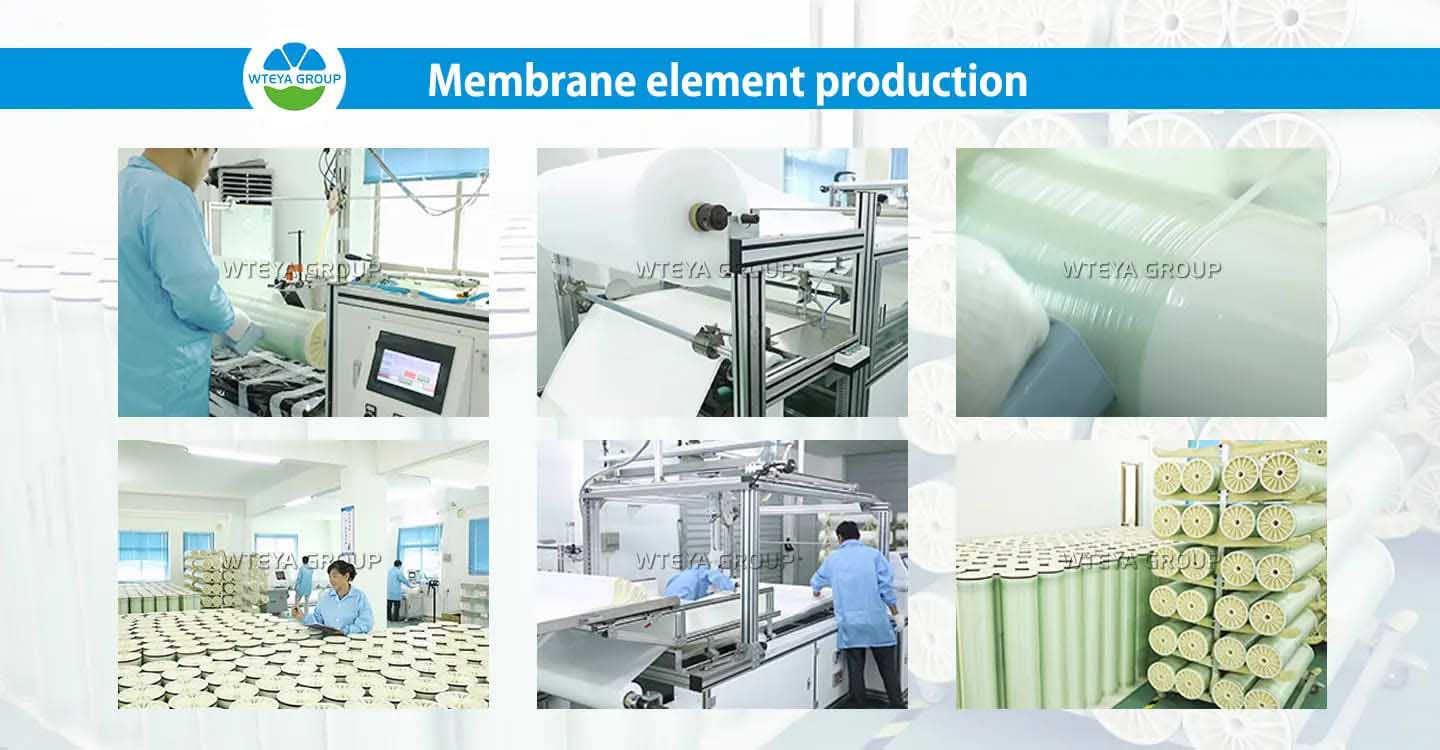
Capacity and size
|
Parameter chart of RO elements |
||||
|
Film element model |
Standard % salt filtration rate |
Through the water volume gpd (m³/d) |
Active Film area of FT2 (square meter) |
Water supply channel width (Mil) |
|
ME-8040HR |
99.6 |
13,000 (49.3) |
400 (37) |
34 |
|
ME-8040FR |
99.7 |
10,100 (38.5) |
400 (37) |
34 |
|
ME-8040SW |
99.7 |
6,700 (25.5) |
400 (37) |
34 |
Chart of effect chart
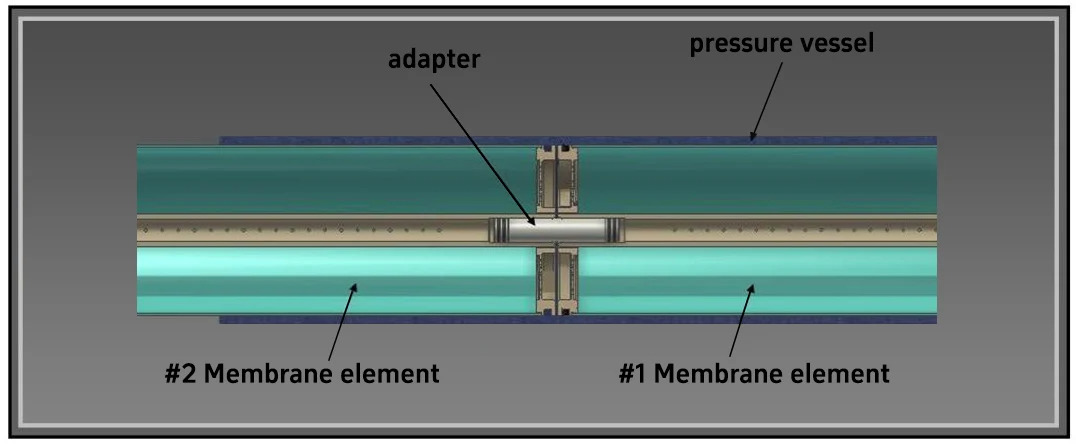
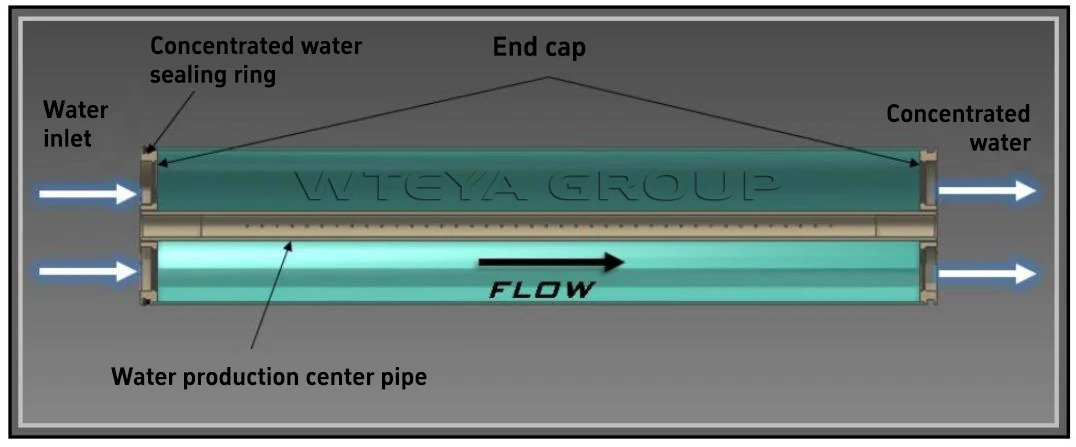
Frequently Asked Questions
Q: What's RO membrane?
Re: reverse osmosis membrane is a very small aperture filter, able to separate water molecules from solution with high pressure, and prevent most soluble salts, bacteria, virus, and other impurities from going through.
Q: How does the RO membrane work?
Re: reverse osmosis membrane uses reverse osmosis and osmosis principle, when the pressure is higher than the natural osmosis pressure applied, water molecules will flow back through semi-Seeed films to separate pure water.
Q: What contaminants can be trimmed by RO membrane?
Re: Ro film can remove bacteria, virus, heavy metal ions, soluble salt, organic agents and some water-soluble chemicals.
Q: How long RO membrane should be replaced?
Re: different RO membrane replacement cycle depending on frequency of use and water quality condition, replacement is usually recommended every 2 to 5 years, specific to manufacturer's instructions and actual use it for identification.
Q: What is the filtration rate of RO membrane?
Re: Ro film usually has a salt filtration rate above 90%, which means it is effective in reducing hardness and salinity in the water.
Q: How do reverse osmosis membrane require water pressure?
Re: RO system usually requires a certain water pressure to normal operation, this pressure range usually varies from 40 to 60 psi (square pounds).
Q: How to wash and care RO membrane?
Re: Ro film cleaning and care regularly include steps like frequent washing, backwash and rinse chemical to eliminate dirt and grow bacteria on the film surface.
Q: What is the application of RO membrane?
Re: the RO membrane is widely used in home and commercial drinking water purification, public water supply system, the use of water in medical and pharmaceutical industry, industrial filtration and sewage treatment, etc. V. T.







